#lorawan sensors
Text
Has the Internet of Things (IoT) changed our daily lives?
The Internet of Things (IoT) is drastically changing our lives, making everything more connected and accessible. IoT has made its way into everyday items, making them part of an information ecosystem that's reshaping our world.
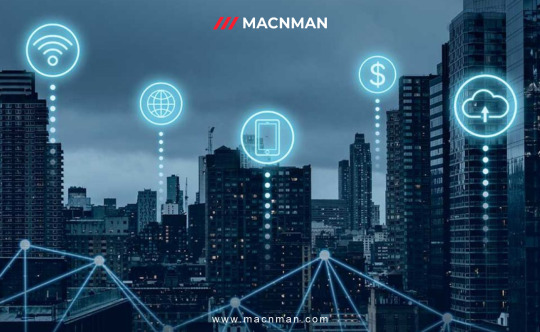
So, how will IoT change the world? IoT has already revolutionized where and how work is done across various industries. It's ushering in the era of the Internet of Everything (IoE), connecting machines, people, processes, and data in ways that profoundly impact our daily lives.
Looking at real-life IoT examples, we see automated temperature control through thermostats, smart devices like Amazon Echo and Google Home, wearables tracking heart rates, home security systems, and voice-activated smart lighting systems.
IoT has a profound influence on our daily routines, transforming various aspects of our lives by harnessing the power of connectivity, data, and intelligent machines.
Smart Home Convenience: IoT has made our homes smarter and more convenient. We can control our thermostats, lights, and appliances remotely using smartphones or voice commands through devices like Amazon Echo and Google Home. Smart locks, cameras, and doorbells provide enhanced security and peace of mind.
Health and Wellness: Wearable IoT devices such as fitness trackers and smartwatches have become commonplace. They help individuals monitor their physical activity, heart rate, sleep patterns, and more. These devices encourage healthier lifestyles and empower people to take charge of their well-being.
Connected Transportation: IoT plays a significant role in transportation through applications like vehicle telematics and navigation systems. Smart cars can communicate with each other and with traffic infrastructure to optimize routes and enhance safety. Ride-sharing apps also rely on IoT for efficient matching and tracking.
Precision Agriculture: In agriculture, IoT sensors and devices monitor soil conditions, crop health, and weather data. Farmers can make data-driven decisions to optimize irrigation, fertilization, and pest control, increasing crop yields while conserving resources.
Healthcare: IoT has transformed healthcare with remote patient monitoring. Devices can track vital signs and transmit data to healthcare providers, allowing for early intervention and reducing the need for frequent hospital visits. IoT-enabled medical equipment also enhances patient care.
Retail and Shopping: IoT has changed the way we shop. Smart shelves and beacons in stores provide personalized offers and product recommendations. E-commerce benefits from IoT through inventory management, tracking deliveries, and optimizing supply chains.
Energy Efficiency: Smart meters and IoT-connected appliances enable homeowners to monitor and reduce energy consumption. This not only lowers utility bills but also contributes to environmental sustainability.
Industrial IoT (IIoT): In the industrial sector, IoT sensors and automation improve production processes, reduce downtime, and enhance overall efficiency. IIoT also enables predictive maintenance, saving both time and resources.
Environmental Monitoring: IoT is used for environmental monitoring and conservation efforts. Sensors collect data on air quality, water quality, and wildlife movement, aiding in environmental research and protection.
Smart Cities: IoT technologies are integral to smart city initiatives. They help manage traffic flow, optimize waste collection, enhance public safety, and provide real-time information to residents and visitors.
Supply Chain Optimization: Businesses use IoT to track goods and shipments throughout the supply chain. This improves inventory management, reduces losses, and ensures products reach consumers more efficiently.

In essence, IoT has become an integral part of modern life, affecting various aspects of our daily routines. Its ability to connect devices, collect data, and enable automation has brought about greater convenience, efficiency, and connectivity in nearly every industry and sector. As IoT continues to evolve, its impact on our lives will likely grow even more significant.
0 notes
Text
Smart Helmet Tracker with Sensors for Construction Accident Prevention
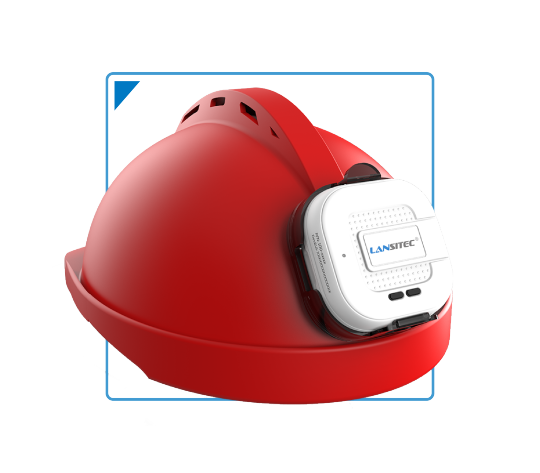
Construction-specific smart helmets use a variety of sensors, including temperature sensors, GPS, gyroscopes, accelerometers, and more. These sensors keep an eye on the wearer's vital signs, head movements, and surroundings all the time. In order to enable proactive accident prevention, the gathered data is processed in real time to deliver quick insights and early alerts. Lansitec Helmet Sensor is designed based on GNSS, Bluetooth5.0 and LoRa technology. It supports indoor and outdoor tracking. It supports various features which contribute to easy management in industrial settings.
For More:
#technology#lansitec#iot#lora#lorawan#asset management#Helmet Tracker#Helmet Sensor#Bluetooth#Sensor
2 notes
·
View notes
Text
1 Channel Industrial IoT Long Range Wireless Ultrasound Vibration Sensor

The Industrial IoT Ultrasound Vibration Sensor from NCD – a high-performance solution engineered explicitly for industry-leading predictive maintenance applications. Integrated with a wireless mesh networking architecture, it delivers an impressive range of up to 2 miles. The sensor employs a high-precision, dual-channel 16-bit ADC, capturing vibration data at user-specified intervals and wirelessly transmitting the recorded data to remote modems and gateways.
For More:
0 notes
Photo
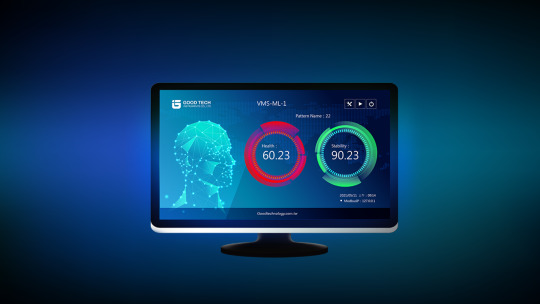
什麼是週期性生產設備?如何監測? 監測觀念與餘命預測 近年來隨著製程不斷細微化,為了提升產品良率與產能,對於這些設備動作的精準度和穩定度要求也就越來越高。而vms-ml機器學習智能監控系統能夠藉由設備在其運轉、製造時所產生的重複性、複製性的動作和流程來建立模型及標準,並透過監測所得到的數據來幫助使用者掌握設備的狀態達到預知保養的目的,優化製造流程實現提升產線良率的目標,更能增加設備的使用效率、延長設備的使用壽命等等。
-------------------------------------------------------------------------------------------
contact us:
mail:[email protected]
tel:+886-3-3561682
youtube
1 note
·
View note
Photo

Warehouses are an integral part of any supply chain management process. A temperature-controlled environment is required to store raw materials, products, spares, etc. In some cases, temperature and humidity variations can degrade the quality of a product to an excessive extent. Maintaining a specific temperature and humidity for food products until they are transported is necessary.
Most of the warehouses have a temperature-monitoring system, which is a wired system. Either such warehouses have solutions where past-recorded data in data loggers are used to analyze the trend, or a wired system is laid to obtain real-time data involving cost, effort, and time. Such solutions include issues as given below.
UniConverge Technologies offers Temperature/Humidity sensor node device, which provides real-time ambient temperature and humidity at remote locations. Multiple node devices can easily connect with Wireless Ethernet Gateway, which can transfer data to a cloud server through MQTT or to a local server through Modbus TCP/IP for monitoring the real-time data.
0 notes
Text
Specification • PM2.5, PM10 based pollution Detection, • CO2 level monitoring for traffic density. • Auto path clearance for Ambulance and fire brigade based on RF communication to traffic light via Mobile/Web application MCU Specification • SX1262+STM8L152 integrated. • Frequency Range: 865MHz ~ 867MHz. • Maximum Power +21dBm constant RF
#Best LoRaWAN Air Pollution Monitoring#Hydraulic Trainer kit & Pneumatic Trainer kit manufacturers#LoRaWAN Air Pollution Monitoring system manufacturers#lorawan device#lorawan vs lora#lorawan temperature sensor#lorawan end node
0 notes
Text
The Internet of Things (IoT): A Revolution in Connectivity and Innovation
Introduction
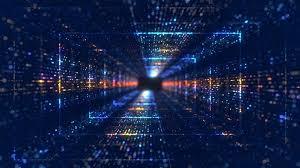
Introduction to IoT
The Internet of Things (IoT) represents a paradigm shift in technology, bringing about a world where devices, sensors, and systems are interconnected, enabling them to collect and exchange data. This interconnected network of "things" encompasses a vast array of objects from everyday household items to complex industrial machinery. The advent of IoT has revolutionized numerous sectors, driving innovation and efficiency while transforming how we interact with technology.
IoT-Enabled Products
IoT-enabled products are the tangible manifestations of this technology, designed to bring convenience, automation, and intelligence to various aspects of life. These products span numerous categories, including smart homes, healthcare, transportation, agriculture, and industrial applications.
Smart Homes
In the realm of smart homes, IoT-enabled devices such as smart thermostats, security systems, lighting, and appliances enhance comfort, security, and energy efficiency. Products like the Nest Thermostat learn user preferences and adjust temperatures accordingly, while smart security cameras and doorbells from companies like Ring offer real-time monitoring and alerts, ensuring safety.
Healthcare
The healthcare sector benefits immensely from IoT through devices that enable remote monitoring and telemedicine. Wearable health monitors, like the Fitbit and Apple Watch, track vital signs and physical activity, providing valuable data for both users and healthcare providers. IoT-enabled medical devices such as insulin pumps and connected inhalers ensure better management of chronic diseases, improving patient outcomes.
Transportation
IoT's impact on transportation is profound, with innovations like connected cars, fleet management systems, and smart traffic management. Connected vehicles from manufacturers like Tesla and Ford are equipped with sensors and software that enable autonomous driving, real-time diagnostics, and over-the-air updates. Fleet management solutions optimize routes and maintenance schedules, enhancing efficiency and reducing costs.
Agriculture
In agriculture, IoT facilitates precision farming through devices that monitor soil conditions, weather patterns, and crop health. Drones and automated machinery equipped with IoT sensors ensure optimal planting, watering, and harvesting, increasing yields and reducing waste. Companies like John Deere are pioneering smart agricultural equipment that leverages IoT for better farm management.
Industrial Applications
The industrial sector sees significant advancements through IoT in the form of smart factories and Industry 4.0. IoT-enabled machinery and sensors monitor equipment health, predict failures, and optimize production processes. This leads to increased efficiency, reduced downtime, and lower operational costs. Siemens and GE are at the forefront of integrating IoT into industrial operations, creating more responsive and adaptive manufacturing environments.
Technologies Behind IoT
The successful implementation of IoT relies on several key technologies that enable connectivity, data collection, and analysis.
Sensors and Actuators
Sensors are the eyes and ears of IoT devices, gathering data from the environment. They come in various types, including temperature sensors, motion detectors, and pressure sensors. Actuators, on the other hand, enable devices to interact with their surroundings by executing physical actions, such as turning on a light or opening a valve.
Connectivity
IoT devices require robust and reliable connectivity solutions to communicate with each other and central systems. This is facilitated by various communication protocols and networks, including Wi-Fi, Bluetooth, Zigbee, LoRaWAN, and 5G. Each has its own strengths and applications, from short-range, low-power communications to long-range, high-speed data transfer.
Edge Computing
Edge computing processes data closer to where it is generated, reducing latency and bandwidth usage. This is crucial for real-time applications like autonomous driving and industrial automation, where immediate decision-making is required. By processing data locally, edge devices can respond more quickly and reliably than if they had to rely solely on cloud computing.
Cloud Computing
Cloud computing provides the infrastructure for storing, processing, and analyzing vast amounts of data generated by IoT devices. It offers scalability and flexibility, enabling businesses to manage their IoT deployments effectively. Platforms like Amazon Web Services (AWS) IoT, Microsoft Azure IoT, and Google Cloud IoT provide comprehensive solutions for managing IoT ecosystems.
Artificial Intelligence and Machine Learning
Artificial intelligence (AI) and machine learning (ML) are integral to IoT, allowing devices to learn from data and make intelligent decisions. Predictive maintenance, anomaly detection, and autonomous operations are some of the capabilities enabled by AI and ML. These technologies transform raw data into actionable insights, driving innovation and efficiency across various sectors.
Leading IoT Manufacturers
Numerous companies are driving the development and deployment of IoT technologies, each contributing to the ecosystem with their unique offerings.
Cisco
Cisco is a global leader in networking and cybersecurity solutions, playing a crucial role in the IoT landscape. Their IoT solutions encompass connectivity, security, and analytics, providing a comprehensive framework for managing IoT devices and data. Cisco's IoT portfolio includes industrial networking, edge computing, and cybersecurity products designed to support various industries.
IBM
IBM's IoT solutions leverage their expertise in AI and cloud computing to deliver innovative applications for smart cities, industrial automation, and more. IBM Watson IoT platform provides powerful tools for connecting, managing, and analyzing IoT data, enabling businesses to harness the full potential of their IoT deployments.
Intel
Intel is at the forefront of IoT innovation with its range of processors, modules, and solutions designed for IoT applications. Intel's IoT products are used in various sectors, including healthcare, retail, and industrial automation, providing the computational power and connectivity needed for advanced IoT systems.
Siemens
Siemens is a pioneer in industrial IoT, offering solutions that integrate hardware, software, and services to optimize manufacturing processes. Their MindSphere platform is a leading industrial IoT as a service (SaaS) solution, enabling businesses to connect their machines and products to the digital world and harness the power of data analytics.
Google
Google's contributions to IoT are centered around its cloud services and AI capabilities. Google Cloud IoT offers a suite of tools for managing IoT devices and data, integrating seamlessly with Google's AI and machine learning services. This allows businesses to build intelligent, data-driven IoT applications with ease.
Challenges and Future Prospects
While the IoT presents immense opportunities, it also poses several challenges. Security and privacy are paramount concerns, as the proliferation of connected devices increases the risk of cyberattacks and data breaches. Ensuring robust security measures and protecting user data are critical for the continued growth and acceptance of IoT.
Interoperability and standardization are other significant challenges, as the vast array of devices and protocols can lead to compatibility issues. Developing common standards and frameworks is essential to ensure seamless integration and communication between different IoT systems.
Looking ahead, the future of IoT is promising, with advancements in technologies like 5G, AI, and edge computing driving further innovation. The ongoing development of smart cities, autonomous vehicles, and industrial automation will continue to expand the scope and impact of IoT, making our world more connected and intelligent.
Conclusion
The Internet of Things is a transformative force, reshaping industries and improving lives through connectivity and data-driven insights. IoT-enabled products, powered by advanced technologies and driven by leading manufacturers, are paving the way for a smarter, more efficient future. As the IoT ecosystem continues to evolve, addressing challenges and leveraging new opportunities will be key to unlocking its full potential.
0 notes
Text
What's to come Calls: Investigating IoT and Smart App Development
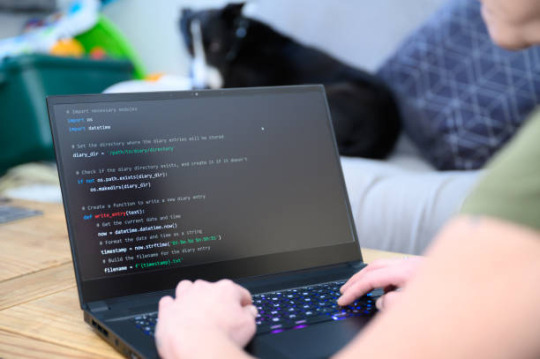
Presentation:
In the present quickly advancing mechanical scene, the Web of Things IoT & Smart App Development stand at the front of advancement. This article dives into the meaning of IoT and the complexities of creating smart applications, revealing insight into their effect across different areas.
Figuring out IoT:
The Web of Things, or IoT, alludes to the organization of interconnected gadgets inserted with sensors, programming, and different innovations, empowering them to gather and trade information. These gadgets can go from regular articles like home appliances and wearables to modern apparatus and vehicles. IoT works with consistent correspondence between gadgets, offering remarkable degrees of mechanization, proficiency, and accommodation.
The Advancement of Smart App Development:
Smart applications are the main impetus behind IoT, engaging clients to easily associate with and control associated gadgets. From smart home frameworks that control temperature and lighting to medical services applications observing essential signs continuously, smart apps are changing the way in which we communicate with innovation. The advancement of smart app development includes utilizing state of the art innovations like man-made consciousness, AI, and information examination to make instinctive, client driven encounters.
Key Parts of IoT and Smart App Development:
Equipment Incorporation: Coordinating sensors, actuators, and other equipment parts into IoT gadgets shapes the underpinning of smart app development. Strong equipment guarantees precise information assortment and consistent cooperation with the advanced biological system.
Information The board and Examination: The tremendous measures of information created by IoT gadgets require refined administration and investigation methods. Smart applications influence information examination to infer noteworthy experiences, empowering prescient support, customized suggestions, and streamlined activities.
Availability Conventions: Laying out dependable correspondence channels between IoT gadgets and smart applications is fundamental for consistent usefulness. Normal availability conventions incorporate Wi-Fi, Bluetooth, Zigbee, and LoRaWAN, each fit to explicit use cases in view of elements like reach, power utilization, and information move rate.
Security and Protection: With the expansion of associated gadgets, guaranteeing the security and security of client information becomes fundamental. Smart app designers carry out hearty encryption, validation, and access control components to protect delicate data and relieve network safety dangers.
Applications Across Enterprises:
Smart Home Robotization: IoT-empowered gadgets like smart indoor regulators, lighting frameworks, and surveillance cameras offer property holders phenomenal command over their residing spaces, improving solace, accommodation, and energy effectiveness.
Medical care and Wearable Innovation: Wearable gadgets outfitted with biometric sensors and wellbeing observing capacities engage people to follow their wellness levels, screen constant circumstances, and get customized wellbeing bits of knowledge continuously.
Modern IoT (IIoT): In modern settings, IoT advancements streamline processes, further develop resource the executives, and improve wellbeing by empowering prescient upkeep, remote checking, and independent activity of apparatus and hardware.
Smart Urban communities: IoT arrangements assume a critical part in building smarter, more practical urban areas by improving transportation frameworks, overseeing energy utilization, and upgrading public wellbeing through advances like smart matrices, traffic the executives frameworks, and natural checking gadgets.
Difficulties and Future Standpoint:
While IoT and smart app development offer tremendous potential, they likewise present critical difficulties, including interoperability issues, information protection concerns, and network safety chances. Tending to these difficulties requires cooperative endeavors from industry partners, policymakers, and innovation trend-setters.
Looking forward, the cooperative energy among IoT and smart app development is ready to drive further advancement across different areas, changing ventures, improving lives, and forming the fate of associated biological systems.
End:
All in all, IoT and smart app development address a change in perspective by they way we see and cooperate with innovation. By bridling the force of interconnected gadgets and insightful applications, we open additional opportunities for productivity, comfort, and maintainability, making ready for a smarter, more associated world.
0 notes
Text
The Evolving Landscape of IoT Services: Unlocking New Dimensions in Connectivity
In an increasingly interconnected world, the term "Internet of Things" (IoT) has emerged as a cornerstone of modern technological evolution. IoT is a revolutionary concept that extends internet connectivity beyond traditional devices like computers and smartphones to a broad range of systems and devices, enabling them to collect and exchange data seamlessly. IoT services, the backbone of this ecosystem, offer the tools and platforms that facilitate the seamless interaction among these connected devices, ultimately leading to smarter decision-making and more efficient operations across numerous sectors. In this blog, we'll explore the nature, applications, and future implications of IoT services.
What are IoT Services?
IoT services encompass a broad suite of offerings that include the development, management, and deployment of IoT solutions. These services are designed to support interconnected devices across various industries, providing capabilities that range from device management and integration to analytics and security solutions. IoT service providers deliver the infrastructure and platforms necessary for devices to communicate, analyze data, and operate autonomously in a secure environment.
Key Components of IoT Services
Device Management: This includes the provisioning, administration, and maintenance of IoT devices. Effective device management ensures devices are always operational, firmware and software updates are applied, and security is maintained.
Connectivity Management: IoT devices require reliable connectivity to transmit data. IoT services provide robust connectivity solutions across different networks (such as cellular, Wi-Fi, and LoRaWAN), ensuring persistent and secure data flow between devices and their managing platforms.
Data Analytics and Processing: IoT generates vast amounts of data. IoT services provide powerful analytics tools that process this data to derive meaningful insights, which can be used to improve operational efficiency, predict maintenance needs, and enhance decision-making processes.
Security Services: Security is paramount in IoT networks to protect sensitive data and maintain privacy. IoT services include comprehensive security frameworks that address potential vulnerabilities, from the device level to network interactions and data storage.
Applications of IoT Services
The applications of IoT services are vast and varied, spanning multiple industries:
Smart Homes: IoT services enable smart home devices like thermostats, lights, and security systems to operate together seamlessly, improving energy efficiency and security while offering convenience and comfort to homeowners.
Healthcare: In healthcare, IoT services support devices like wearable health monitors and connected medical equipment, facilitating remote health monitoring and improving patient care through real-time data sharing.
Manufacturing: Known as Industrial IoT (IIoT), IoT services in manufacturing optimize production processes, improve supply chain management, and enhance safety by monitoring equipment and environmental conditions.
Smart Cities: IoT services contribute to the development of smart cities through intelligent traffic management systems, energy-efficient buildings, and improved public services through the use of connected sensors and devices.
Future of IoT Services
The future of IoT services looks promising, with advancements poised to further transform how we live and work. Emerging trends include:
Increased Adoption of AI: Integration of AI with IoT services is enhancing the autonomy of systems, enabling more sophisticated data analysis, and predictive maintenance.
Edge Computing: By processing data closer to where it is generated, edge computing reduces latency and bandwidth use, enhancing the responsiveness of IoT systems.
5G Technology: The rollout of 5G networks will significantly boost the speed and capacity of IoT services, enabling more devices to connect and interact more reliably and in real-time.
Conclusion
IoT services are reshaping the technological landscape, driving innovation across various sectors and promising to enhance the quality of life and operational efficiency. As these services evolve, they will play a crucial role in the realization of a fully connected world. For businesses and consumers alike, understanding and leveraging IoT services will be key to gaining competitive advantages and experiencing unprecedented convenience and efficiency in daily activities. As we look to the future, the potential of IoT services continues to expand, promising exciting possibilities for everyone in the ecosystem.
0 notes
Text
Empowering Connectivity: Exploring the Evolution of IoT Remote Monitoring Devices
In an era defined by connectivity and data-driven decision-making, IoT (Internet of Things) remote monitoring devices have emerged as indispensable tools across various industries. These compact yet powerful devices enable real-time monitoring, management, and control of assets, processes, and environments from virtually anywhere in the world. In this article, we delve into the transformative potential of IoT remote monitoring devices, exploring their applications, benefits, and the evolving landscape of this dynamic technology.

The Essence of IoT Remote Monitoring Devices
At the heart of IoT remote monitoring devices lies the convergence of hardware, software, and connectivity technologies. These devices are equipped with an array of sensors capable of capturing diverse environmental parameters, such as temperature, humidity, pressure, vibration, and more. By harnessing wireless communication protocols like Wi-Fi, cellular, Bluetooth, or LoRaWAN, IoT remote monitoring devices transmit the collected data to cloud-based platforms for analysis, visualization, and action.
Applications Across Industries
The versatility of IoT remote monitoring devices extends across a myriad of industries, revolutionizing operations and unlocking new opportunities for efficiency and optimization:
Manufacturing: In manufacturing facilities, IoT remote monitoring devices enable predictive maintenance by continuously monitoring equipment health and performance metrics.
Healthcare: In healthcare settings, IoT remote monitoring devices facilitate remote patient monitoring, allowing healthcare providers to monitor vital signs, medication adherence, and disease progression from a distance. This enhances patient care, enables early intervention, and reduces the need for frequent hospital visits.
Agriculture: In agriculture, IoT remote monitoring devices help farmers optimize irrigation, monitor soil health, track weather conditions, and manage livestock remotely. By providing real-time insights, these devices enable data-driven decision-making, resulting in higher crop yields and sustainable farming practices.
Energy Management: In the energy sector, IoT remote monitoring devices enable efficient management of energy assets, including power plants, substations, and renewable energy installations. By monitoring energy consumption, detecting anomalies, and optimizing resource allocation, these devices contribute to energy conservation and cost savings.
Logistics and Supply Chain: In logistics and supply chain management, IoT remote monitoring devices provide end-to-end visibility into the movement and condition of goods during transit. From temperature-sensitive pharmaceuticals to perishable food items, these devices ensure compliance with regulatory requirements, maintain product quality, and mitigate the risk of spoilage or damage.
Benefits and Advantages
The adoption of IoT remote monitoring devices offers a myriad of benefits to organizations across industries:
Real-time Visibility: Organizations gain real-time visibility into their operations, enabling proactive decision-making and rapid response to changing conditions.
Cost Savings: By enabling predictive maintenance, optimizing resource utilization, and minimizing downtime, IoT remote monitoring devices help organizations reduce operational costs and improve efficiency.
Enhanced Safety and Compliance: In industries where safety and regulatory compliance are paramount, IoT remote monitoring devices provide continuous monitoring and early detection of potential hazards, ensuring a safe and compliant working environment.
Scalability and Flexibility: IoT remote monitoring solutions are inherently scalable and adaptable, allowing organizations to deploy and expand their monitoring capabilities as needed, without significant infrastructure investments.
The Future of IoT Remote Monitoring Devices
As technology continues to evolve, the future of IoT remote monitoring devices holds immense promise.
Edge Computing: The integration of edge computing capabilities into IoT remote monitoring devices enables real-time data processing and analysis at the edge of the network, reducing latency and bandwidth requirements.
AI and Machine Learning: The integration of AI and machine learning algorithms enhances the intelligence of IoT remote monitoring devices, enabling predictive analytics, anomaly detection, and autonomous decision-making.
Blockchain Integration: The use of blockchain technology ensures data integrity, security, and transparency, enhancing trust in IoT remote monitoring systems, particularly in industries where data provenance is critical.
Interoperability and Standards: Efforts to standardize communication protocols and ensure interoperability among IoT devices facilitate seamless integration and data exchange, driving widespread adoption and innovation.
In conclusion, IoT remote monitoring devices represent a paradigm shift in how organizations monitor, manage, and optimize their operations. By harnessing the power of connectivity, data analytics, and intelligent automation, these devices empower organizations to achieve new levels of efficiency, safety, and sustainability in an increasingly interconnected world. As technology continues to advance, the potential applications and benefits of IoT remote monitoring devices are limited only by imagination.
0 notes
Text
What is the difference between the LoRaWAN wireless module and LoRa gateway wireless transmission technology?
Many individuals find it challenging to differentiate between the LoRaWAN wireless module and LoRa gateway wireless transmission technology, as well as their applications within the realm of IoT.
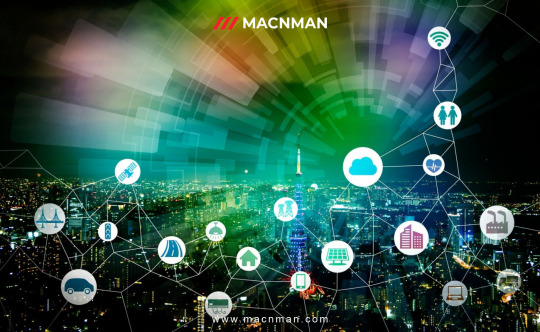
LoRaWAN specifically pertains to the networking protocol found within the MAC (Media Access Control) layer. In contrast, LoRa serves as a protocol within the physical layer. Although current LoRaWAN networking implementations utilize LoRa as the physical layer, it's worth noting that the LoRaWAN protocol also allows for the use of GFSK (Gaussian Frequency-Shift Keying) as the physical layer in specific frequency bands. From a network layering perspective, LoRaWAN can adopt various physical layer protocols, just as LoRa can serve as the physical layer for other networking technologies.
LoRa, as a technology, falls under the category of LPWAN (Low-Power Wide-Area Network) communication technologies. It represents an ultra-long-distance wireless transmission method based on spread spectrum technology, pioneered and promoted by Semtech in the United States. This approach revolutionizes the previous trade-off between transmission distance and power consumption, offering users a straightforward system capable of achieving extended range, prolonged battery life, and increased capacity. Consequently, it expands the capabilities of sensor networks. Currently, LoRa predominantly operates within free frequency bands globally, including 433/868/915MHz, among others.
On the other hand, LoRaWAN wireless communication stands as an open standard defining the communication protocol for LPWAN technology based on LoRa chips. LoRaWAN defines the Media Access Control (MAC) layer at the data link level and is overseen by the LoRa Alliance. It's crucial to distinguish between LoRa and LoRaWAN because companies like Link Labs utilize a proprietary MAC layer in conjunction with LoRa chips to create more advanced hybrid designs, such as Link Labs' Symphony Link.
LoRaWAN typically employs a star or star-to-star topology, which is generally considered superior to mesh networks due to advantages such as conserving battery power and extending communication range. In a star topology, messages are relayed to a central server through gateways, and each end node can transmit data to multiple gateways. These gateways then forward the data to the web server, where tasks like redundancy detection, security checks, and message scheduling are executed.
In summary, LoRa encompasses solely the link layer protocol, making it suitable for point-to-point (P2P) communication between nodes. In contrast, LoRaWAN includes the network layer, allowing data to be sent to any base station connected to a cloud platform. By connecting the appropriate antenna to its socket, the LoRaWAN module can operate at different frequencies, offering versatility in its applications.
0 notes
Text
Increasing Security and Effectiveness: The Disclosure of Helmet Tracking Technology

A complex technology called Helmet Tracker was created to make managing and monitoring helmets in a variety of professional contexts easier. This technology guarantees that helmets are not only kept track of but also maintained and replaced when necessary, whether in industrial, sports, or construction settings. It also offers useful information to improve safety procedures. As safety and efficiency continue to change, technological advancements are changing how we approach many facets of our life.
For More:
#lora#iot#technology#lansitec#tracking#lorawan#bluetooth#wireless#helmet sensor#helmet tracker#sensor
0 notes
Text
Leading IoT Application Development Companies in Chennai
In the era of digital transformation, the Internet of Things (IoT) has emerged as a game-changing technology that enables the connection and communication of devices and systems to gather, analyze, and act on data in real-time. As businesses seek to leverage the power of IoT to drive innovation, improve efficiency, and enhance customer experiences, partnering with a trusted IoT application development company is essential. If you're searching for top-tier IoT application development companies in Chennai, you've come to the right place. Our company is a leading provider of cutting-edge IoT solutions tailored to meet the diverse needs of businesses in Chennai and beyond. In this guide, we'll explore the key features and benefits of our IoT application development services and how they can help your organization thrive in the digital age.
Key Features of Our IoT Application Development Services:
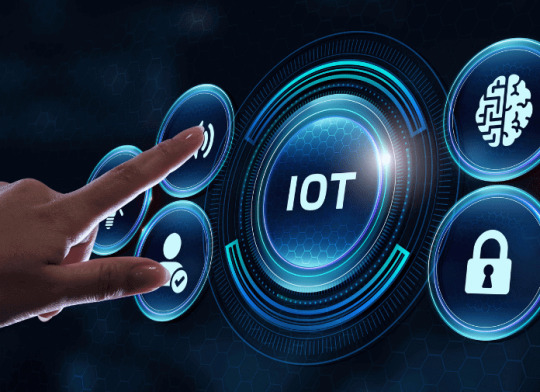
1. Customized IoT Solutions:
We specialize in developing customizediot application development companies in Chennai designed to address the specific requirements and objectives of our clients. Whether you're looking to build a smart home system, industrial automation platform, healthcare monitoring solution, or connected vehicle application, our expert team of IoT developers can turn your vision into reality with precision and expertise.
2. Expertise in IoT Technologies:
Our team possesses deep expertise in a wide range of IoT technologies, protocols, and platforms, including MQTT, CoAP, Zigbee, LoRaWAN, AWS IoT, Azure IoT, and more. We stay abreast of the latest advancements and best practices in the IoT space, enabling us to leverage the most suitable technologies and tools to deliver robust and scalable IoT solutions.
3. Sensor Integration and Data Analytics:
IoT applications rely on sensor data to gather insights and make informed decisions in real-time. We specialize in sensor integration and data analytics, enabling seamless connectivity and data exchange between devices, systems, and cloud platforms. Our advanced analytics capabilities allow clients to derive actionable insights from IoT data, driving smarter decision-making and business outcomes.
4. Cloud Integration and Edge Computing:
IoT applications often involve complex architectures that span across cloud and edge environments. We have extensive experience in cloud integration and edge computing, enabling seamless communication, data processing, and storage between IoT devices and cloud platforms. Our solutions are designed to optimize performance, minimize latency, and ensure reliability in IoT deployments.
5. Security and Privacy:
Security is a top priority in IoT application development, especially when dealing with sensitive data and mission-critical systems. We adhere to industry best practices and security standards to ensure the confidentiality, integrity, and availability of IoT systems and data. Our solutions incorporate robust authentication, encryption, access control, and monitoring mechanisms to mitigate cybersecurity risks and protect against potential threats.
Benefits of Partnering with Our IoT Application Development Company:
1. Accelerated Time-to-Market:
Our agile development approach and expertise in IoT technologies enable us to deliver high-quality IoT solutions quickly and efficiently, reducing time-to-market and giving clients a competitive advantage.
2. Scalability and Flexibility:
We design IoT solutions with scalability and flexibility in mind, allowing clients to easily scale their deployments as their business grows and adapt to changing market demands and requirements.
3. Improved Operational Efficiency:
IoT applications automate processes, optimize resource utilization, and enable predictive maintenance, leading to improved operational efficiency, cost savings, and productivity gains for businesses.
4. Enhanced Customer Experiences:
By leveraging IoT technology, businesses can create personalized, immersive, and interactive experiences for their customers, driving engagement, loyalty, and satisfaction.
5. Future-Proofing Your Business:
IoT is poised to revolutionize industries and transform business models in the years to come. Partnering with a trusted IoT application development company ensures that your business remains at the forefront of innovation and well-positioned to capitalize on emerging opportunities in the IoT space.
Conclusion:
As a leading IoT application development company in Chennai, we are committed to empowering businesses with innovative IoT solutions that drive growth, efficiency, and digital transformation. Whether you're a startup looking to disrupt the market or an enterprise seeking to optimize operations, our team has the expertise and experience to help you achieve your IoT goals. Partner with us today and embark on a transformative journey towards IoT-enabled success.
For more info. Visit us:
iot application development companies in Chennai
iot hardware development companies in Chennai
product design and development companies in Chennai
#iot application development companies in Chennai#iot hardware development companies in Chennai#product design and development companies in Chennai
0 notes
Text
New Report: Installed Base of Video Telematics Systems in North America and Europe to Hit 15 Million Units by 2028 - Exclusive Data Revealed! [https://iotbusinessnews.com/2024/04/17/04844-THE-INSTALLED-BASE-OF-VIDEO-TELEMATICS-SYSTEMS-IN-NORTH-AMERICA-AND-EUROPE-TO-REACH-15-MILLION-UNITS-BY-2028/]
RoamNook Blog
Bringing New Information: The Power of Numbers
Welcome to the RoamNook blog, your trusted source for the latest and most informative content in the world of technology. In this article, we will delve into the exciting realm of numerical data, presenting you with hard facts, key statistics, and concrete information that is sure to captivate your mind.
The Rise of Video Telematics Systems in North America and Europe
According to recent research conducted by IoT Business News, the installed base of video telematics systems in North America and Europe is projected to reach a staggering 15 million units by the year 2028. This exponential growth highlights the increasing integration of video monitoring technology in the automotive industry, leading to enhanced safety and efficiency on the roads.
Unveiling the Future of LoRaWAN
The LoRa Alliance®, a prominent global organization dedicated to promoting the LoRaWAN standard, has unveiled its comprehensive development roadmap. The tremendous success of LoRaWAN as a standardized communication protocol has paved the way for its future evolution and direction. This roadmap provides a clear vision for the technology's continued advancements, ensuring its relevance and effectiveness in the ever-expanding Internet of Things (IoT) landscape.
Revolutionizing Healthcare with IoT
IoT deployment in the healthcare sector presents numerous challenges that need to be addressed to unlock its full potential. The integration of smart devices, wearable technology, and advanced monitoring systems holds the key to transforming patient care and streamlining medical operations. By tackling these challenges head-on, healthcare providers can leverage IoT solutions to improve patient outcomes, reduce costs, and revolutionize the industry as a whole.
KORE and GoRout: Enhancing Communication on the Field
KORE, a leading provider of global IoT solutions, has partnered with GoRout, a cutting-edge sports technology company, to tackle communication challenges between players and coaches. By leveraging KORE's reliable and secure connectivity solutions, GoRout can enhance real-time communication, enabling athletes to execute strategies and improve performance on the field. This collaboration exemplifies the transformative power of IoT in the world of sports.
The Smart Waste Sensor Technology Market on the Rise
The smart waste sensor technology market is projected to grow at an impressive compound annual growth rate (CAGR) of 22.8 percent until 2028. This growth can be attributed to the increasing adoption of smart waste management solutions by municipalities and businesses alike. These sensor-based technologies optimize waste collection, reduce operational costs, and contribute to a cleaner and more sustainable environment.
Navigating the Future of Smart Parking
By the year 2028, the installed base of smart parking sensors is expected to reach a remarkable 3.2 million units. These sensors revolutionize the parking experience, providing real-time occupancy information and facilitating efficient parking guidance systems. With the integration of IoT technology, cities can optimize parking resources, reduce congestion, and enhance the overall urban experience.
Conclusion: Fueling Digital Growth with RoamNook
As we conclude this informative journey through the world of numerical facts and objective insights, we invite you to tap into the potential of RoamNook. RoamNook is an innovative technology company specializing in IT consultation, custom software development, and digital marketing. Our mission is to fuel digital growth and help businesses unlock their full potential in the digital age.
By leveraging cutting-edge technologies, such as IoT, AI, and blockchain, RoamNook empowers organizations to achieve their strategic objectives and drive sustainable growth. Partner with RoamNook today to harness the power of innovation and revolutionize your business landscape.
Contact Us:
Email: [email protected]
Phone: +1 123-456-7890
Address: 123 Main Street, City, Country
Stay Connected:
Facebook
Twitter
RSS Feed
LinkedIn
Learn More:
About IoT Business News
Advertise with Us
List Your Event
Subscribe to Our Newsletter
Contact Us
Source: https://iotbusinessnews.com/2023/10/12/08780-5-challenges-of-data-analytics-within-iot-systems-and-tips-to-solve-them/&sa=U&ved=2ahUKEwiJnc_op8qFAxVoMVkFHckqAWgQxfQBegQIBBAC&usg=AOvVaw0CkYiddso37fLRZaZ_8iPJ
0 notes
Photo

UniConverge Technologies offers products for smart irrigation solutions.
Features:
Wireless Irrigation Controller
• Internet Only needed at the gateway
• Range is 3km Radius
• Can be controlled using Cloud app/ Mobile app
• Integration with field Sensors
• Reduce wiring in the field
• Easy to install
• Solar Powered /No wiring for the power needed
Irrigation & Fertigation Controllers
• Schedule based Irrigation
• 2 Independent Programs
• 4 Start time
• Total 6 valve control including 4 Station valves with Fertigation and a Bypass valve to switch between irrigation and fertigation
• Battery backup so user can program even during no electricity
• Low Flow /Rain Sensor Support
• Pump Starter relay support with pump initiation time
Auto Back Flush Controllers
• Time-Based Flushing
• Differential pressure-based Flushing
• Manual Flushing
• Looping Detection
• 4 potential Free output for valve/motor/Actuator
• 9 to 24 VDC operations
• Can be customized for different types of media filterers
Temperature & Humidity Sensor
• Battery/ Solar Powered
• Wide range of Sensor Selection
• Low Power Consumption
• Small Form Factor
• IP65 Enclosure
• LoRaWAN Compliant
• Range 3km
• Comes with a stainless steel probe
Learn more- https://lnkd.in/e-Z8YZpT
#smartirrigation #agritech #smartfarming #smartirrigationsolution #solutions #lorawan #wireless #gateway #internet #sensors #temperature #detection #pressure #valve #valves #pump #flow #humidity #motor #actuator #irrigation #controllers #wireless #auto #sensor #controller #control #range #startupindia #madeinindia #atmanirbharbharat #UniconvergeTechnologies #UCTrobotics
#smartirrigation#smart irrigation market#agritech#solutions#internet#lorawan#wireless#gateway#sensor#temperature#controllers#startup#startupindia#madeinindia#atmanirbhar#uniconvergetechnologies#uctrobotics
0 notes
